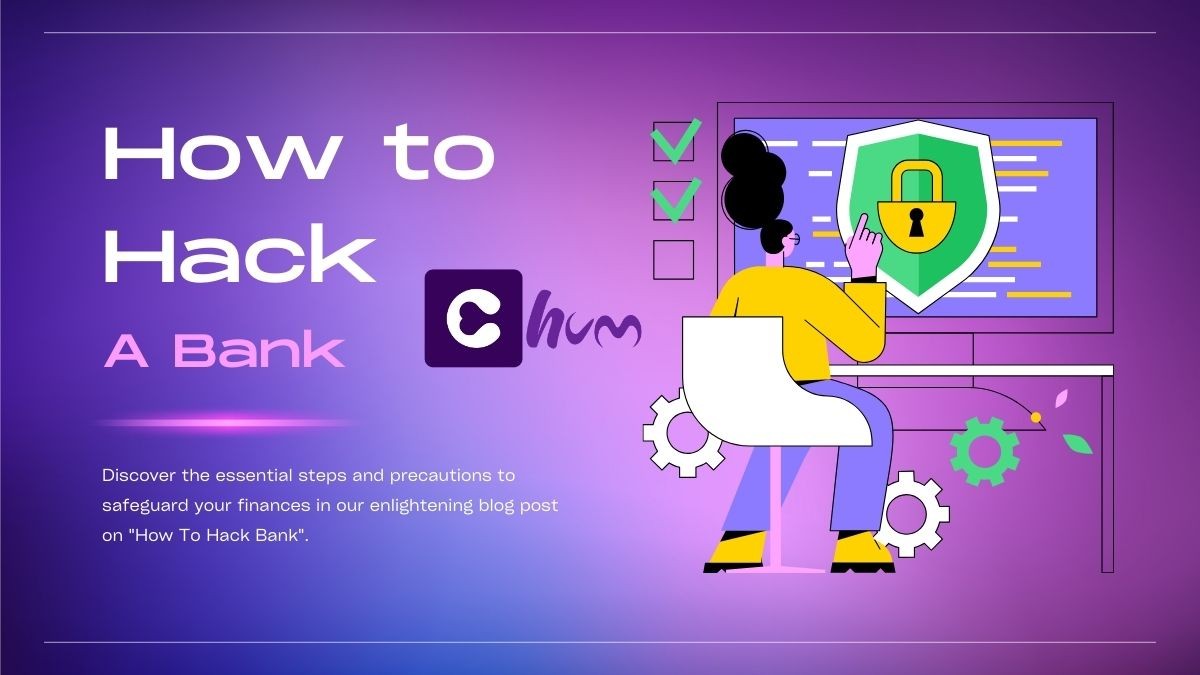Introduction
In today's digitally driven world, where financial transactions are predominantly conducted online, the security of our banking systems is of paramount importance.
With the convenience of digital banking comes the inherent risk of cyber threats and malicious attacks. Therefore, understanding and fortifying bank security measures is essential to safeguarding our hard-earned money.
Explanation of the Importance of Bank Security
Bank security isn't merely a matter of protecting financial institutions; it's about safeguarding the assets and livelihoods of individuals and businesses alike. The repercussions of a security breach can be severe, leading to financial loss, identity theft, and damage to reputation.
Moreover, in an interconnected financial ecosystem, a breach in one institution can have cascading effects, destabilizing the entire banking sector.
Brief Overview of the Topics to be Covered
Throughout this article, we will delve into various aspects of bank security and protection. We'll start by exploring the evolution of bank hacking techniques and understanding the methods employed by cybercriminals to breach security measures.
We'll then dissect three primary avenues of attack: phishing, malware, and social engineering. Each of these tactics capitalizes on different vulnerabilities within the banking system, posing unique challenges to security.
Furthermore, we'll discuss practical strategies for protecting your finances, including strengthening password security, monitoring account activity, and securing your devices.
By implementing these measures, individuals and organizations can mitigate the risk of falling victim to cyber threats and ensure the integrity of their financial transactions.
In essence, this article serves as a comprehensive guide to navigating the complex landscape of bank security.
By enhancing our understanding of potential threats and implementing proactive security measures, we can better protect ourselves and our assets in an increasingly digitized world.
Understanding Bank Hacking Techniques
In the ever-evolving realm of cybercrime, hackers employ sophisticated techniques to exploit vulnerabilities in banking systems and gain unauthorized access to sensitive information.
Understanding these methods is crucial in devising effective security measures to protect against potential threats. Below, we'll explore the evolution of bank hacking techniques and provide insights into common tactics used by cybercriminals.

The Evolution of Bank Hacking Techniques
Bank hacking techniques have evolved significantly over the years, mirroring advancements in technology and the shifting landscape of cyber threats.
Gone are the days of simplistic attacks; today's hackers utilize sophisticated methods and tools to bypass security measures and access valuable financial data.
From rudimentary phishing scams to complex malware attacks, the arsenal of cybercriminals continues to expand, posing formidable challenges to bank security.
Overview of Common Methods
While the tactics employed by hackers may vary, they generally fall into three main categories: phishing, malware, and social engineering. Each method targets different aspects of the banking system, exploiting weaknesses in technology, human behavior, or both.
By understanding the mechanics of these techniques, individuals and organizations can better prepare themselves to defend against potential attacks and mitigate the risk of financial loss.
Let's delve deeper into each of these methods, examining their underlying principles, common tactics, and preventive measures. By gaining insights into the tactics used by cybercriminals, we can bolster our defenses and enhance the security of our banking systems.
Phishing: A Deceptive Threat
Phishing stands as one of the most insidious methods used by hackers to infiltrate banking systems and compromise sensitive information. It preys on human psychology, exploiting trust and deception to trick unsuspecting individuals into divulging confidential data.
In this section, we'll unravel the mechanics of phishing attacks and guide in recognizing and thwarting these deceptive threats.
Explanation of Phishing Attacks
Phishing attacks typically involve fraudulent emails, text messages, or phone calls masquerading as legitimate entities, such as banks or financial institutions.
These communications often contain urgent requests for personal or financial information, such as login credentials or account numbers.
By luring victims into divulging sensitive data, hackers can gain unauthorized access to bank accounts and perpetrate fraudulent transactions.
Recognizing Phishing Attempts
Recognizing phishing attempts is crucial in thwarting these deceptive attacks. Common red flags include unsolicited communications requesting sensitive information, grammatical errors or inconsistencies in the message content, and suspicious URLs or email addresses.
Additionally, legitimate organizations typically do not request sensitive information via email or text message, especially with a sense of urgency.
Steps to Protect Against Phishing Attacks
Protecting oneself against phishing attacks requires vigilance and skepticism. Individuals should refrain from clicking on links or downloading attachments from unknown sources, verify the authenticity of communications before responding, and enable spam filters and security features offered by email providers.
Furthermore, education and awareness are paramount; by educating themselves and others about the tactics used by phishers, individuals can better identify and report suspicious activity.
Importance of Two-Factor Authentication
Implementing two-factor authentication (2FA) adds an extra layer of security to banking accounts, significantly reducing the risk of unauthorized access.
By requiring users to provide a second form of verification, such as a code sent to their mobile device, 2FA mitigates the effectiveness of phishing attacks and enhances the overall security posture of banking systems.
Therefore, enabling 2FA wherever possible is highly recommended as a proactive measure against phishing and other cyber threats.
Malware: A Silent Intruder
Malware represents another potent weapon in the arsenal of cybercriminals, capable of infiltrating banking systems undetected and wreaking havoc on financial institutions and their clients.
Unlike phishing, which relies on deception and social engineering, malware operates stealthily, exploiting vulnerabilities in software and systems to compromise sensitive data.
In this section, we'll delve into the intricacies of malware attacks and explore strategies for defending against this silent intruder.
Explanation of Malware and Its Effects
Malware encompasses a wide range of malicious software designed to disrupt, damage, or gain unauthorized access to computer systems.
Common types of malware include viruses, worms, Trojans, and ransomware, each with its own set of capabilities and objectives.
Once installed on a victim's device, malware can execute various malicious activities, such as stealing sensitive information, logging keystrokes, or encrypting files for ransom.

Types of Malware Used in Bank Hacking
In the context of bank hacking, malware serves as a powerful tool for cybercriminals seeking to compromise financial systems and extract valuable data.
Banking trojans, for example, are specialized malware designed to target online banking platforms, intercepting login credentials and transaction data for illicit purposes.
Similarly, ransomware attacks have increasingly targeted financial institutions, encrypting critical systems and demanding ransom payments to restore access.
Implementing Antivirus Software
Deploying robust antivirus software is essential in defending against malware attacks. Antivirus programs employ sophisticated algorithms and detection mechanisms to identify and quarantine malicious software before it can cause harm.
By regularly updating antivirus definitions and performing system scans, individuals and organizations can proactively detect and remove malware from their devices, bolstering their overall security posture.
Regular System Updates to Prevent Malware Attacks
Regular system updates play a critical role in preventing malware attacks by patching known vulnerabilities and strengthening the overall security of software and systems.
Cybercriminals often exploit outdated software to infiltrate devices and networks, making timely updates essential in mitigating the risk of infection.
By enabling automatic updates and staying vigilant for patch notifications, users can stay one step ahead of malware threats and protect their financial assets effectively.
Social Engineering: Exploiting Human Vulnerabilities
In the world of cybercrime, human beings can often be the weakest link in the security chain. Social engineering tactics leverage psychological manipulation to deceive individuals into divulging confidential information or performing actions that compromise security.
Unlike traditional hacking methods that target technological vulnerabilities, social engineering preys on human weaknesses, such as trust, curiosity, and fear. In this section, we'll explore the nuances of social engineering and provide strategies for mitigating its risks.
Explanation of Social Engineering Tactics
Social engineering encompasses a broad spectrum of tactics, ranging from impersonation and pretexting to baiting and tailgating.
These tactics aim to exploit human trust and emotions to gain unauthorized access to sensitive information or secure areas.
For example, an attacker might pose as a trusted authority figure, such as a bank representative or IT technician, to manipulate victims into disclosing passwords or granting access to restricted systems.

Examples of Social Engineering Techniques Used in Bank Hacking
In the context of bank hacking, social engineering tactics can take various forms, each tailored to exploit specific vulnerabilities within the banking system.
Phony customer service calls, for instance, might trick unsuspecting account holders into revealing login credentials or verification codes.
Similarly, fraudulent emails posing as security alerts or account notifications can lure recipients into clicking on malicious links or downloading malware-infected attachments.
Educating Yourself and Others to Recognize Social Engineering Attempts
Education and awareness are crucial in combating social engineering attacks. By familiarizing themselves with common tactics and red flags, individuals can better recognize and resist manipulation attempts.
Organizations can also play a pivotal role by providing security training and implementing policies and procedures to verify the legitimacy of requests for sensitive information or access.
Establishing Strict Security Protocols to Mitigate Social Engineering Risks
In addition to education and awareness, establishing strict security protocols is essential in mitigating the risks posed by social engineering attacks.
Implementing multi-factor authentication, for example, adds an extra layer of verification, making it harder for attackers to compromise accounts through impersonation or pretexting.
Similarly, enforcing strict access controls and authorization procedures can limit the potential impact of social engineering attacks by restricting unauthorized access to sensitive information and systems.
By combining proactive measures with a culture of security awareness, individuals and organizations can effectively defend against social engineering attacks and safeguard their financial assets from exploitation.
Conclusion
In navigating the complex landscape of bank hacking and protection, it's evident that safeguarding our finances requires a multi-faceted approach that encompasses awareness, education, and proactive security measures.
Throughout this guide, we've explored the various techniques employed by cybercriminals to exploit vulnerabilities in banking systems and compromise sensitive information.
From phishing and malware to social engineering, these tactics pose significant threats to the security of our financial assets.
However, armed with knowledge and equipped with practical strategies, individuals and organizations can fortify their defenses against cyber threats and mitigate the risk of falling victim to malicious attacks.
By understanding the red flags of phishing attempts, implementing robust password security measures, and regularly monitoring account activity for suspicious transactions, individuals can proactively protect their finances from unauthorized access and fraudulent activity.
Moreover, fostering a culture of security awareness and implementing strict security protocols within organizations can further bolster defenses against cyber threats, mitigating the risk of successful attacks and minimizing the potential impact of security breaches.
By prioritizing security and staying informed about emerging threats and best practices, we can collectively work towards a safer and more secure banking environment for all.
In closing, safeguarding our finances against bank hacking requires a collaborative effort that involves individuals, organizations, and financial institutions working together to combat cyber threats and protect our financial well-being.
By remaining vigilant, proactive, and informed, we can navigate the digital landscape with confidence and peace of mind, knowing that our financial assets are secure and protected from exploitation.












